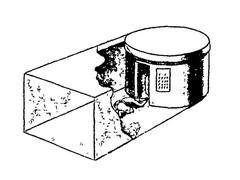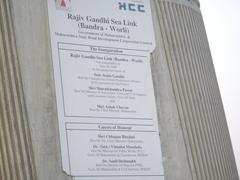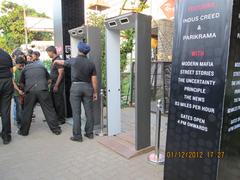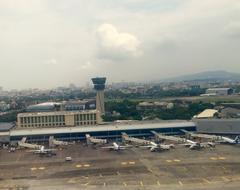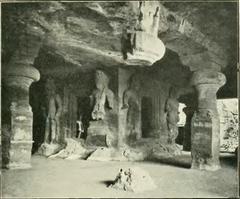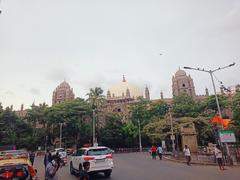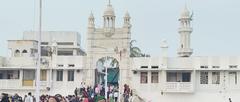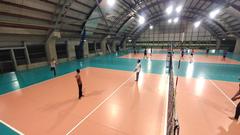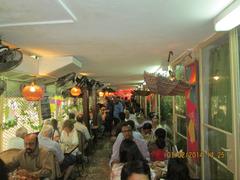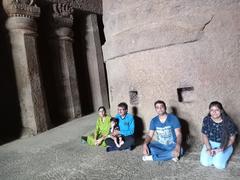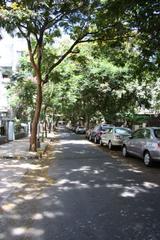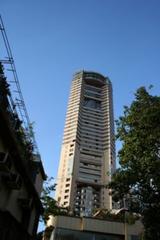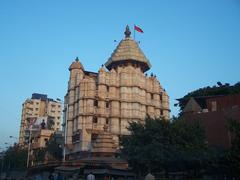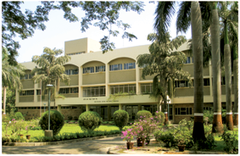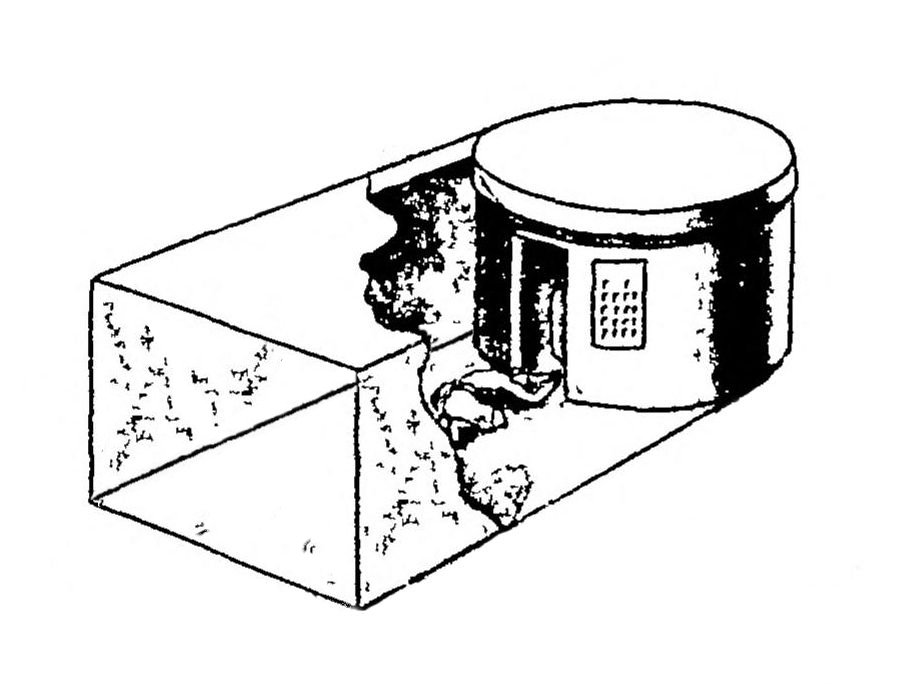
Visiting Mahakali Caves: Hours, Tickets, History, and More
Date: 18/08/2024
Introduction
Nestled in the bustling Andheri East suburb of Mumbai, the Mahakali Caves, also known as the Kondivita Caves, are a hidden gem that offers a fascinating glimpse into ancient Indian rock-cut architecture and Buddhist monastic life. Excavated between the 1st century BCE and the 6th century CE, these 19 rock-cut monuments are a testament to the architectural and artistic skills of ancient Indian craftsmen (Free Press Journal). The caves, primarily Buddhist viharas (monasteries) and chaityas (prayer halls), reflect the religious and cultural milieu of the time, making them an essential site for understanding India’s rich Buddhist heritage and architectural ingenuity.
The Mahakali Caves are divided into two groups: the northern group, consisting of four caves, and the southern group, comprising fifteen caves. These caves served as monastic complexes for Buddhist monks for over a millennium, with the presence of stupas and inscriptions in Pali, a language older than Sanskrit, indicating their use for both residential and religious purposes (Free Press Journal). Despite weathering and damage over the centuries, the caves retain their matt black appearance, characteristic of the volcanic basalt rock from which they were carved, showcasing the skill and artistry of the ancient craftsmen.
This comprehensive guide will take you through the historical significance, architectural features, visiting hours, ticket prices, and tips for exploring the Mahakali Caves. Whether you’re an archaeologist, history buff, or a casual traveler, the Mahakali Caves offer a unique and enriching experience that transports you back to ancient India.
Table of Contents
- Introduction
- Historical Significance
- Architectural Features
- Inscriptions and Donations
- Transformation and Preservation
- Cultural and Archaeological Importance
- Visiting Information
- Nearby Attractions
- FAQs
- Conclusion
Historical Significance
Origins and Early History
The Mahakali Caves are a collection of 19 rock-cut monuments that were excavated between the 1st century BCE and the 6th century CE from a solid mountain of black basalt rock. These caves are a testament to the architectural and artistic skills of ancient Indian craftsmen. The earliest phase of the caves dates back to the Ashokan Empire, indicating their historical importance during this period (Free Press Journal).
Buddhist Monastic Life
For over a millennium, the Mahakali Caves served as a monastic complex for Buddhist monks. The caves are divided into two main types: Chaityas (prayer halls) and Viharas (monastic cells). The presence of a stupa in one of the caves suggests that these caves were used for both residential and religious purposes. The monks used these caves for meditation and living, as evidenced by the inscriptions in Pali, a language older than Sanskrit, found on the walls (Free Press Journal).
Architectural Features
The caves are renowned for their intricate carvings and rock-cut cistern patterns. The basalt rock, although durable, is susceptible to weathering, which has led to the damage of several statues and walls over the centuries. Despite this, the caves still retain their matt black appearance, a characteristic feature of the volcanic rock from which they were carved. The most significant cave, Cave 9, houses a Buddhist Stupa, sculptures, and texts on the walls, showcasing the skill and artistry of the ancient craftsmen (Free Press Journal).
Pillars and Columns
The pillars in the Mahakali Caves are a testament to the architectural ingenuity of the period. They are typically octagonal in shape and feature intricate carvings. The pillars in the chaitya hall of Cave 9 are particularly noteworthy. They are adorned with motifs such as lotus flowers, which are significant in Buddhist symbolism.
Stupas
Stupas are a recurring architectural feature in the Mahakali Caves. These structures, often found in the central hall of viharas and at the end of chaitya halls, serve as a focal point for meditation and worship. The stupas in the Mahakali Caves are relatively simple in design, reflecting the early phase of Buddhist architecture.
Carvings and Sculptures
The walls of the Mahakali Caves are adorned with various carvings and sculptures, although many have been eroded over time. The carvings primarily depict scenes from the life of the Buddha, as well as various Buddhist symbols. One of the most notable carvings is found in Cave 6, which features a relief of the Buddha in a meditative pose.
Inscriptions and Donations
The inscriptions found in the Mahakali Caves provide valuable insights into the history and culture of the time. One notable inscription mentions that the Vihara at Mahakali was donated by a person from Paspauli, a nearby village. This indicates that the caves were sustained by donations from the local community, highlighting the interconnectedness between the monastery and the surrounding settlements. The caves were part of an active monastic network connected to the Kanheri Caves, another significant Buddhist site in Mumbai (Free Press Journal).
Transformation and Preservation
Over the centuries, the Mahakali Caves have undergone significant transformations. One of the stupas, initially constructed as a Buddhist memorial, fell from the caves to the foothill and was later revered as a Hindu lingam statue, worshipped as the Mahakali Mandir. This transformation reflects the dynamic nature of religious practices and the syncretism that characterizes Indian spirituality. Despite the damage caused by weathering and human activity, efforts have been made to preserve the caves. The site is well-maintained, with tidy surroundings and facilities for visitors, including portable toilets and a garden with shady trees (Free Press Journal).
Cultural and Archaeological Importance
The Mahakali Caves are not just a historical site but also a cultural and archaeological treasure. The caves offer a glimpse into the life and practices of Buddhist monks over two millennia ago. The sculptures and texts on the walls of Cave 9, in particular, are of great significance. These carvings depict mythological beings from Buddhism, each figure narrating a story, showcasing the rich cultural heritage of the time. The caves also feature 22 water reservoirs, two placed on either side of a cave, which are still used for garden care today (Free Press Journal).
Visiting Information
Visiting Hours and Tickets
The Mahakali Caves are open to the public from 9 am to 5 pm. An entry fee of INR 20 is charged for visitors. Cameras and videos are permitted, allowing visitors to capture the beauty and intricacy of the caves (Optima Travels).
Travel Tips and Accessibility
The site is frequented by archaeologists and history buffs who appreciate its historical and cultural significance. Visitors can explore the caves in two to three hours, taking in the serene and tranquil atmosphere away from the hustle and bustle of Mumbai. The well-maintained garden outside the caves provides a perfect spot for relaxation and reflection. It is advisable to wear comfortable footwear and carry water, especially during the summer months (YoMetro).
Location and Accessibility
By Train
The nearest railway stations are Andheri Railway Station and Jogeshwari Railway Station. Both stations are well-connected to Mumbai’s suburban railway network. From these stations, visitors can take an auto-rickshaw or taxi to reach the caves, which are approximately 5 kilometers from Andheri Railway Station and about 3 kilometers from Jogeshwari Railway Station (Atlas Obscura).
By Metro
Mumbai Metro’s Line 1 connects various parts of the city to the caves. The nearest metro station is Marol Naka, from where visitors can take a short auto-rickshaw ride to the site (YoMetro).
By Bus
Mumbai has a robust bus network. Visitors can take a bus to Andheri East and then walk to the site. The government also runs buses directly to the caves (Maharashtra Planet).
By Air
The closest major airport is Chhatrapati Shivaji International Airport, which is approximately 6 kilometers away from the caves. From the airport, visitors can take a taxi or an auto-rickshaw to reach the site (YoMetro).
Best Time to Visit
The best time to visit the Mahakali Caves is during the cooler months from September to November. This period offers a pleasant climate, making it ideal for exploring the caves and the surrounding area (YoMetro).
Facilities and Amenities
Photography
Photography is allowed inside the caves, but flash photography is prohibited to preserve the ancient rock carvings and inscriptions (Tripoto).
Washrooms
Modern, neat, and clean washroom facilities are available near the caves, ensuring a comfortable visit for tourists (Optima Travels).
Shops and Eating Joints
There are several shops and eating joints nearby where visitors can purchase eatables and drinks. This makes it convenient for tourists to grab a quick snack or refreshment during their visit (Optima Travels).
Nearby Attractions
MIDC Industrial Area
One of the largest and oldest industrial areas in Mumbai, the MIDC Industrial Area houses several factories, offices, and warehouses. Visitors can take a tour to see the different types of industries and businesses that operate in Mumbai (Tripoto).
Chota Kashmir
Located near Goregaon, Chota Kashmir is a park with abundant flora and a lush green cover. It also features a lake that facilitates boating activities, making it a popular spot for relaxation and recreation (Holidify).
Jogeshwari Caves
These are one of the oldest cave temples in India, dating back to the 6th century. The Jogeshwari Caves feature Hindu and Buddhist sculptures and are home to various temples of Lord Hanuman, Shiva, Ganesha, and Goddess Jogeshwari (Holidify).
Juhu Beach
The longest beach in Mumbai, Juhu Beach is renowned for its wide variety of street food and is a popular spot for tourists. The surrounding area is one of the poshest localities in Mumbai and is home to many Bollywood celebrities (Holidify).
FAQs
-
What are the Mahakali Caves? The Mahakali Caves are a collection of 19 rock-cut monuments located in Andheri East, Mumbai, dating back to between the 1st century BCE and the 6th century CE.
-
What are the visiting hours and ticket prices for the Mahakali Caves? The caves are open from 9 am to 5 pm, with an entry fee of INR 20.
-
Are cameras and videos allowed in the caves? Yes, cameras and videos are permitted.
-
What are some nearby attractions? Nearby attractions include the Kanheri Caves, Sanjay Gandhi National Park, and Jogeshwari Caves.
Conclusion
The Mahakali Caves stand as a remarkable testament to ancient Indian rock-cut architecture and Buddhist monastic life. Their historical significance, intricate carvings, and serene surroundings make them a must-visit for anyone interested in history, culture, and archaeology. Despite the challenges posed by weathering and human activity, efforts by the Archaeological Survey of India and other organizations have helped preserve this cultural treasure (Atlas Obscura).
Visitors to the Mahakali Caves can immerse themselves in the rich history and culture of ancient India, marveling at the skill and creativity of the artisans who created these magnificent structures. The caves offer not only a glimpse into the past but also provide a peaceful retreat from the hustle and bustle of Mumbai (Free Press Journal). Nearby attractions like the Kanheri Caves, Sanjay Gandhi National Park, and the Jogeshwari Caves further enrich the experience, making a visit to this historical site a well-rounded and memorable journey.
Plan your visit to the Mahakali Caves today and experience the awe-inspiring beauty and historical significance of this ancient site. For more updates and travel tips, follow us on social media and check out our other related posts.
References
- Title, 2023, Free Press Journal Free Press Journal
- Title, 2023, Atlas Obscura Atlas Obscura
- Title, 2023, YoMetro YoMetro
- Title, 2023, Optima Travels Optima Travels
- Title, 2023, Tripoto Tripoto
- Title, 2023, Maharashtra Planet Maharashtra Planet
- Title, 2023, Holidify Holidify
